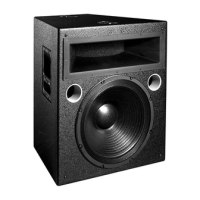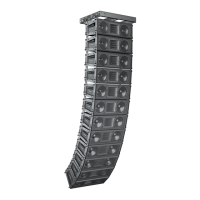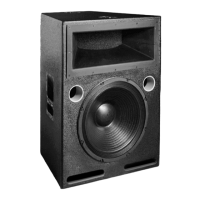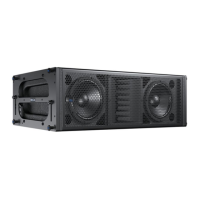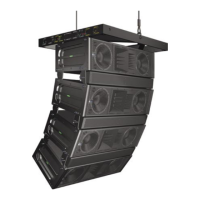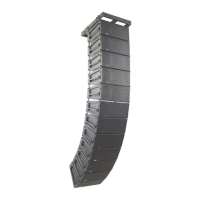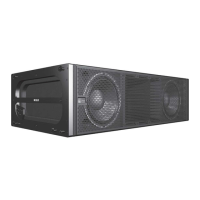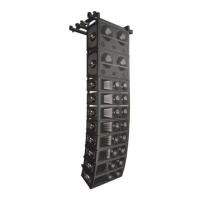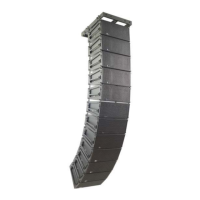7
The fans draw air in through ducts on the front of the
cabinet, over the heatsinks, and out the rear of the
cabinet. Since dust does not accumulate in the amplifier
circuitry, its life span is increased significantly. Make
sure that the air ducts are clear and that there is at
least 6” clearance for exhaust behind the cabinet.
air
air
cooling
fans
heatsinks
power
supply
A foam insert filter, in combination with the entire
front grill surface, acts as an air filter for the cooling
system. Despite the filtering, extensive use or a dusty
operating environment can allow dust to accumulate
along the path of the airflow, preventing normal cooling.
We recommend periodically removing the grill, filter,
and amplifier module and using compressed air to
clear dust from the grill, filter, fans, and heatsinks.
Example Applications
NOTE: Orientations refer to the angle formed by the
planes of the cabinet face and the horizontal surface on
which the PSM-2 is placed; see the diagrams (right).
The PSM-2 is most often used as a stage monitor at a
35° or 55° angle. The choice of orientation depends on
the musician’s height and distance from the monitor.
In general, orient the PSM-2 at
•35° to stand within 2 ft of the monitor;
•55° to stand further than 6 ft from the monitor.
The PSM-2 can be used effectively with a Meyer self-
powered subwoofer with, or without, a crossover. The
third example discusses an application without a
crossover. The Meyer LD-1A Line Driver assists using
the PSM-2 as a mid-hi speaker with a sub by providing
a crossover, mid-hi and sub level controls, and EQ
functions. Contact Meyer Sound for information about
the LD-1A.
At any orientation, the PSM-2’s coverage area is:
–6 dB points: 50° H x 50° V
–10 dB points: 70° H x 70° V
PSM-2 at 35
°
With the PSM-2 at 35°, a 5’10” person is within the
coverage area when standing at distances up to about
6 ft from the monitor. The diagram below shows a
grey figure at 8 ft, outside the coverage area.
At 35°, the horn is above the 12” cone driver and the
top-to-bottom profile is 20.5”.
1'
4'
'
50°
35°
5'10"
20.5"
PSM-2 at 55
°
With the PSM-2 at 55°, a 5’10” person is within the
coverage area when standing at distances from 2 to 20 ft
from the monitor. The diagram below shows a grey
figure at 1 ft, outside the coverage area.
At 55°, the horn is to the left of the 12” driver and the
top-to-bottom profile is 19.5”.
1'
4'
50°
55°
20'
5'10"
19.5"
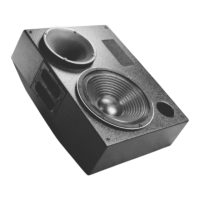
